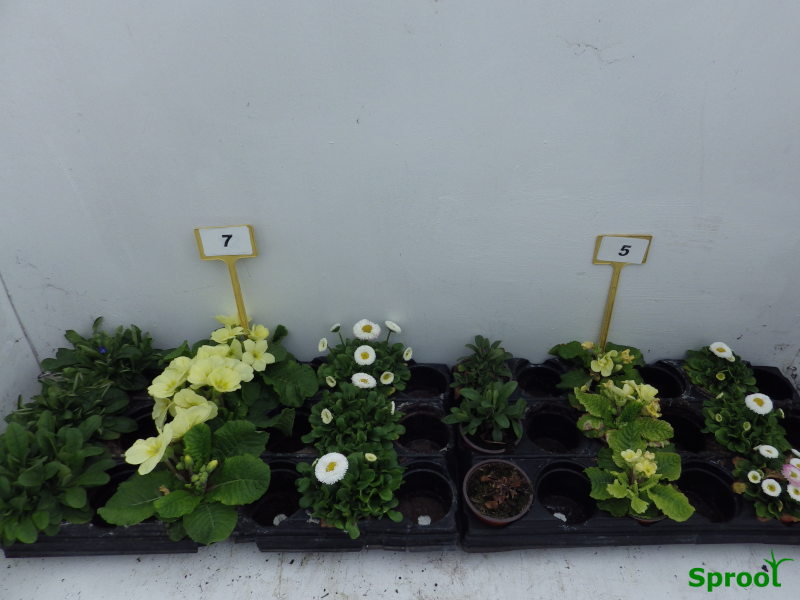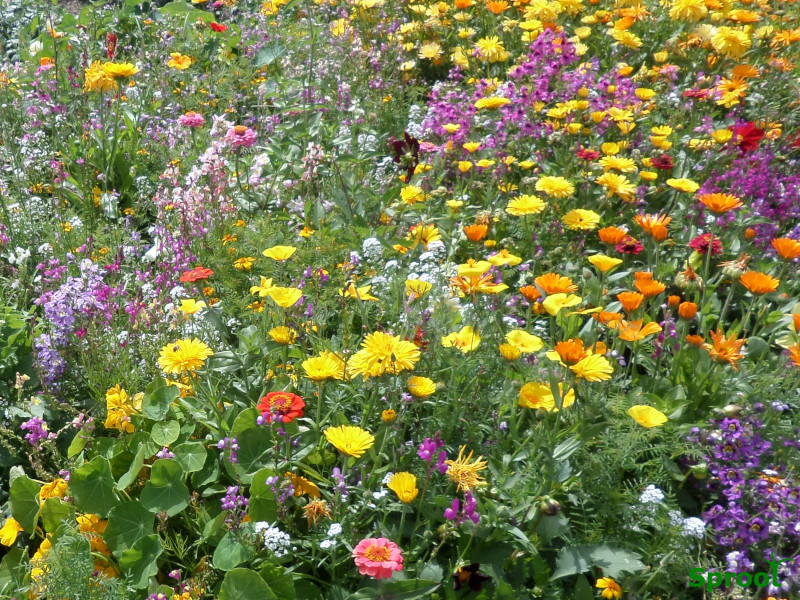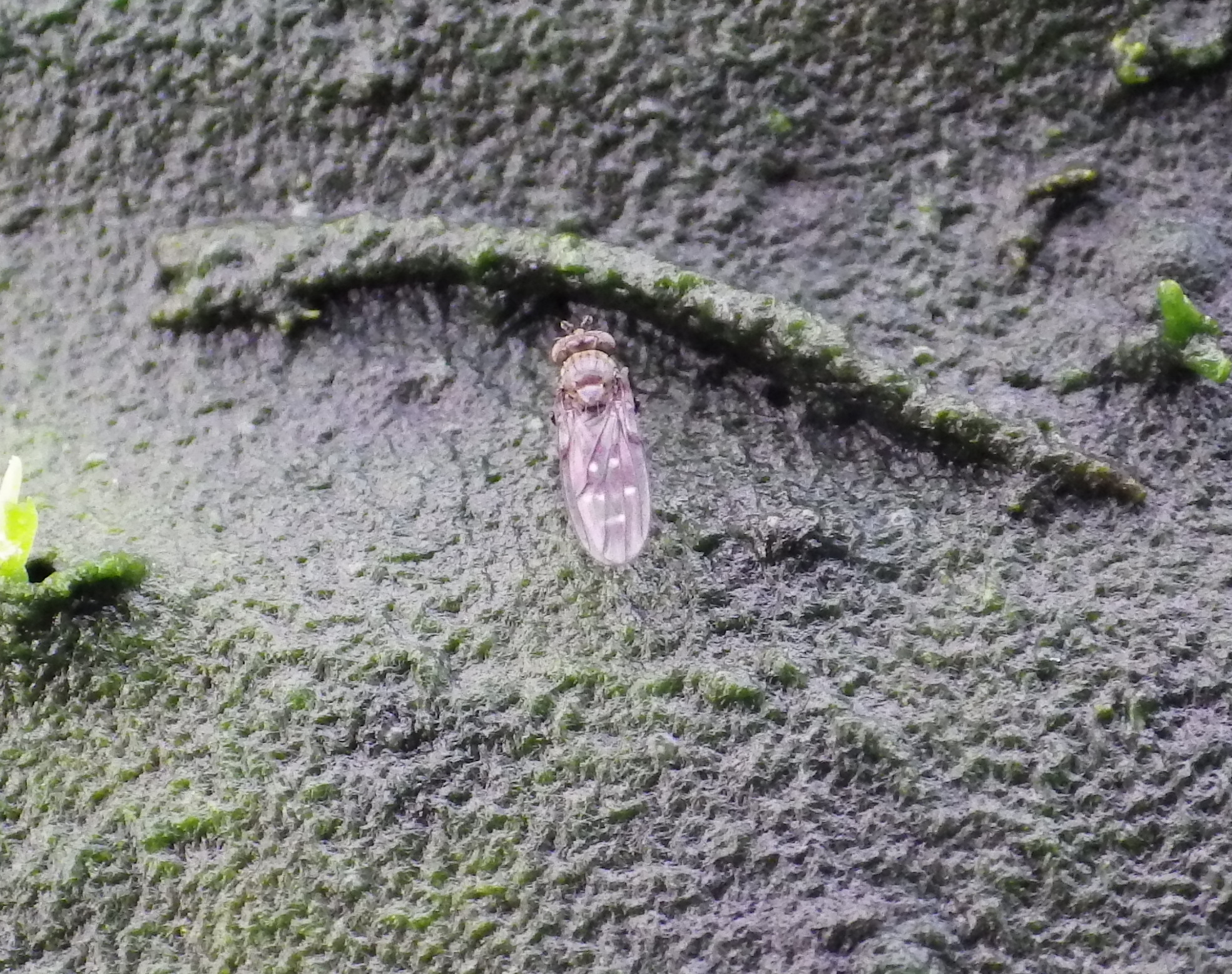A Beginner’s Guide to Buying and Using Compost
What is Compost?
When buying compost, many people assume it’s a simple product, but in reality, it varies widely depending on its intended use. In the UK, what we commonly call compost should actually be referred to as growing media or substrate. Compost is technically the product of a composting operation, like farm yard manure, leaf litter or garden compost
Always check the bag description to ensure it suits your needs, it should say suitable for seed sowing or potting
Choosing the Right Compost
Compost is like a cake mix—by adjusting the ingredients, you can create different textures and nutrient balances. This flexibility allows for compost that is light and fluffy (like a sponge cake) or dense and nutrient-rich (like a fruitcake). The right mix depends on the plant type and growth stage. The compost factory uses a wide range of ingredients and different mixes but they don’t have to tell you exactly what is in the bag so one brand of seed compost may be different to another brand.
Types of Potting Compost
Different types of compost are tailored for specific plants and purposes. Here’s a more detailed look:
- Seed & Cutting Compost – A fine blend with minimal nutrients to support delicate roots, usually containing a mix of fine peat alternatives, perlite, and sand. The low nutrient level prevents damage to fragile new roots.
- Container & Basket Compost – A coarser mix that retains moisture while ensuring good drainage. Often enriched with slow-release feed and water-retaining crystals to maintain hydration.
- Ericaceous Compost – Specially formulated for acid-loving plants like rhododendrons, azaleas, and camellias. Contains iron and sulphur to lower pH levels and prevent yellowing leaves (chlorosis).
- Houseplant Compost – Light, free-draining, and aerated to prevent waterlogging. Usually a mix of peat alternatives, wood fibre, and perlite.
- Aquatic Compost – Specially designed for pond plants, this compost is heavy to keep plants anchored underwater and low in fertiliser to prevent algae growth.
- Cactus Compost – Gritty and well-draining, often including sand and perlite to prevent root rot in succulents and cacti.
- Orchid Compost – Composed mainly of bark, moss, and perlite to provide excellent airflow and drainage, mimicking their natural epiphytic growing conditions.
- Citrus Compost – Slightly acidic with added trace elements like magnesium and calcium, essential for healthy citrus trees.
- Bonsai Compost – A specialist blend balancing drainage, water retention, and aeration, often including akadama (a type of clay granule), grit, and organic matter.
- Vegetable Growing Compost – High in organic matter and slow-release fertilisers to support long-term vegetable growth. Often rich in composted green waste.
- Bulb Planting Compost – Free-draining with added grit to prevent bulbs from rotting in damp conditions. This special mix compost is free draining to promote strong root growth resulting in healthier roots, it might contain long-lasting fertiliser to feed the bulbs after flowering. Not to be confused with bulb fibre which has no fertiliser.
- Tree & Shrub Compost – Designed for planting directly in the ground, often mixed with garden soil for better root establishment.. It is not sold as a compost for potting plants in pots.
Multipurpose Compost – Is It Really Multipurpose?
While multipurpose compost is widely available, it is often a compromise. It works for most plants but is not ideal for all due to its generalised nutrient content and structure. It was developed for the retail trade, it allows them to offer a reduced range of composts and is the weapon of choice for most discounters and garden centres.
Multi-purpose compost is nearly always sold on price and in the race to be cheapest some corners may be cut and cheaper ingredients used.
How to Improve Multipurpose Compost:
- For Seed Sowing: Sieve the compost to remove coarse particles and add 20% perlite for better drainage.
- For Hanging Baskets & Pots: Add slow-release fertiliser and a small amount of topsoil for added structure.
- For Large Outdoor Pots: Mix in slow-release fertiliser, perlite (10%), and topsoil (10-20%) to improve stability and drainage.
John Innes Compost
Developed in the 1930s, John Innes composts contain loam, peat (now replaced with alternatives), and sand, with increasing fertiliser levels for different growth stages:
- Sowing Mix: A fine blend for delicate seedlings.
- No. 1: Suitable for young plants.
- No. 2: Used for potting up plants into larger containers.
- No. 3: For mature, established plants that need more nutrients.
What’s in Your Compost?
Compost serves three main purposes:
- Providing nutrients, air, and water.
- Supporting root growth.
- Physically stabilising the plant.
Key Compost Additives and Their Benefits:
To improve compost, gardeners often add specific ingredients to enhance its properties:
- Base Fertiliser: This is a blend of fertilisers in the correct proportions for plant growth. It can adjusted for different crops and normally lasts 4-6 weeks but can be blended to make it last longer.
All composts will contain base fertiliser, Chemical Base fertiliser however is very water soluble, this makes it immediately available to the plant roots but it is also easily washed out and can run out quite quickly. Organic base fertiliser used to be unpredictable but new mixes can release slowly and steadily.
The amount of base fertiliser that is added to the compost is also important, too much base can burn the roots of young plants, On the nursery we specify the amount of base we want in our compost mix, 100 grams per 100 litres of compost.
Plants sensitive to high levels of fertiliser, young plants, seeds and cuttings might only want 50gm per 100 litres. For pot plants and bedding plants a rate of 80 – 150 grams would be normal. Vegetable and fruit plants would prefer 120 – 175 grams.
Unfortunately most retail bags of compost miss out this vital bit of information. It would be safe to assume seed and cutting compost is 100 grams or less. With other composts it is difficult to tell but most multipurpose will be in the region of 100 – 150 grams. - Slow release fertiliser. designed to release feed over a long period.
Chemical Slow release fertiliser is specially made with a resin coating to release fertiliser slowly over a long period. the fertiliser is released by osmosis, the resin coating is permeable and slowly absorbs water which releases the fertiliser to the potting mix. This natural process is controlled by the temperature of the potting compost. The fertiliser starts to release above 15 degrees centigrade and gets faster as the temperature rises, in theory the plants will be ready to use the extra fertiliser as it is released.
Slow release granules are great for heavy feeders, patio pots and hanging baskets and will supply a continuous supply of fertiliser to maintain growth. In very hot weather they can run out quicker than advertised and may need to be topped up to keep the plant growing. When you use them in the house or greenhouse the higher temperatures can release the fertiliser too quickly and lower rates should be used. In the glare of the sun,the temperature of the compost can rise very quickly especially in greenhouses or window sills, we often seen temperatures above 30 degrees in the greenhouse, this would release the fertiliser very quickly.
Slow release fertiliser is a good addition to tub and basket composts, don’t store the spare compost in the sun or greenhouse and try to use within 6 weeks, the granules will release the fertiliser while stored in the bag. You can buy slow release granules and add them to your compost just follow the rates on the packet.
Organic slow release fertiliser. The best known organic base fertiliser was created by the John Innes institute a ready mixed blend of hoof and horn, superphosphate and potassium sulphate.
Remember it was created in the 1930’s and like most things our plant nutrition knowledge has improved. A model T ford might be nice to look at but you would’t take it for your daily commute on the M25, so it makes sense to upgrade your organic base fertiliser there are some good modern versions to be bought. We now have some really good slow release organic fertilisers that can work as well as the chemical ones - Wood fibre Made from waste wood, this is now widely used in composts. The waste wood is compressed, pressurised, steamed and shredded to produce a fluffy material similar to peat. It has turned out to be better than we thought at improving drainage, re-wetting and increasing air spaces
- Coir: Coir is a relatively new product derived from coconuts. Coir is the fibrous material found between the hard, internal shell and the outer coat of a coconut. It consists mainly of fibres, which have traditionally been used to manufacture rope, carpets, doormats, upholstery stuffing, brushes etc. Between these fibres is the corky substance called coir dust often called cocopeat.
Coir peat has a pH of about 5.0 making it slightly less acidic than sphagnum peat. It has a high water retention capability and re-wets easily. Its ability to hold and maintain its structure is better than peat.
It is a renewable natural waste material, however there are some issues with quality, it needs careful monitoring during the cleaning process and delivery from the far east can cause supply problems. - Sand: The particle sizes of the sand have important effects on the potting compost mix..
Silver sand, washed to remove dust and nominally 1mm and down. It is used in seed and cutting composts, because it is so fine it can improve the water holding capacity.
Grit or sharp sand, washed to remove dust is larger in size, it is added to composts for weight and to improve drainage.
Play sand is only good for play sand pits, it has been tested for staining and chemical contamination and is not the same as silver sand.
Sand from the builder merchant is not washed and will contain dust, it may not be lime free, don’t be tempted to use it without checking. - Perlite: Perlite is a natural mineral of volcanic origin that, when crushed and heat-treated to 1000°C, expands to produce white lightweight particles. The pH is usually neutral to slightly alkaline but may be as high as 9.0. There are several grades of perlite. The finest is used in seed and cutting compost. The coarser grades may hold less water, but they provide lots of extra air and are used to increase drainage.Perlite contains dust which is highly irritating to lungs, we always add water to the bag before using. Building perlite insulation is not suitable for plants, it is similar but not subject to the same tests and specifications
- Vermiculite: Vermiculite is produced by heat treatment of mica. It is porous and light and has a water-holding capacity of three to four times its weight. Care is needed when handling the material as it is easily compressed, which leads to poor drainage and poor aeration. Vermiculite is a useful material for seed sowing and covering.
Building vermiculite insulation is not suitable for plants, it is similar but not subject to the same tests and specifications. - Composted Bark: A byproduct of sawmills and paper mills, it enhances structure and aeration, commonly used in orchid and woodland plant composts. It needs to composted first and has a ph of 6 – 6.5. It is stable and long lasting and is added to improve the structure of composts. It was originally added to help prevent root disease, but more likely, it was the improved drainage that helped. Pine bark is best but other cheaper barks are used, byproduct of sawmills and paper mills
- Loam/Soil: Adds buffering capacity and beneficial microorganisms, commonly found in John Innes composts. In theory sand silt and clay in the correct mix is a loam but a good loam can only be made by the interaction of roots, organic matter and the microflora in the soil. In the old days loam would be made from turf from a old grassland, it would be cut and stacked in piles then allowed to breakdown naturally. You are very unlikely to find a true loam for sale or added to your compost. More likely you will get mixture of soils with the correct sand silt and clay balance, it should have a humus content which retains nutrients and moisture. This soil will have been sieved to remove stones and debris and heat pasteurised to kill off weed seeds.
Most topsoils come from factories processing vegetables or sugar beet, when they wash the crop, the soil stuck to the roots is collected and separated out. The soil will be conditioned and improved then carefully dried out and stored before using.
Adding soil to compost is a good idea it adds some buffering effect which acts as a larder for food, your plants will also benefit from the microflora in the soil. best place to get old fashioned loam is from mole hills on old grass land, you should find it is lovely and crumbly. - Worm Casts: Naturally rich in nutrients and beneficial microbes,Similar in texture to loam, worm cast is a by product of the worm farming industry. We carried out some crop trials on the nursery and the results were impressive, the extra root growth was dramatic and it showed good root disease suppression. Unfortunately it contained quite a lot of weed seed and the suppliers struggled to source clean worm cast, a reliable source of the worm cast is important
Worm cast is a worthy addition to any compost as it contains valuable microflora and is good for buffering and CEC. - Seaweed Extracts: Sea weed extracts contain nutrients, amino acids and plant hormones and can increase root growth and overall plant health. We have been using seaweed as root drenches and foliar sprays on the nursery and the results are impressive.
Maxi crop was one of the first seaweed fertilisers and is still sold today. - Clay: Added as granules, chips or dust they improve the compost by increasing the buffering and CEC capacity. Clean and free of weeds and diseases they are a worthy addition to composts.
- Green Waste Compost: Green waste consists of organic material, humus and a small amount of minerals sand, clay etc. At composting sites the various organic materials (grass, pruning waste, leaves) are mixed and regularly turned, the composting process creates heat and pasteurises the waste.
The quality of compost strongly depends on the raw materials that are used for composting. Green waste is not normally used in commercial compost unless it has been produced to the highest quality. The Dutch RHP standard for green waste in compost, specifies it must not be agricultural or horticultural green waste to prevent the spread of diseases.
So not all green waste is the same, we have tried green waste (from recycling) in our composts and the results were variable but we have seen good results in composts with better quality green waste.
If you don’t control the type and quality of the source materials for green waste you can run into problems.
The waste from biodigesters can be used but it is still composting and needs time to become safe to use.
Green waste is variable and the one ingredient likely to cause problems as the source material, composting process and maturity along with testing is vital.
Peat-Free Compost
The UK is transitioning to peat-free compost due to environmental concerns. These composts are made from materials like composted bark, coir, green waste, and wood fibre. However, they have different properties compared to traditional peat-based composts, requiring adjustments in gardening techniques.

Common Issues with Peat-Free Compost:
By understanding the different types of compost, their additives, and the challenges of peat-free alternatives, you can make informed choices for your garden and give your plants the best possible growing conditions.
- Nutrient and pH Variability – Peat-free composts vary in composition, meaning their nutrient levels and pH can be inconsistent. Some may require additional fertilisation.
- Water Retention Differences – Peat-free compost can dry out quickly or, conversely, retain too much moisture. Adding perlite or grit can help adjust water retention.
- Breaks Down Faster – Peat-free composts decompose more rapidly than peat-based alternatives, meaning soil structure may degrade over time, requiring frequent topping up.
- Potential Contamination from Green Waste – Some composts made from municipal green waste may contain contaminants like plastic, weed seeds, or pathogens. Always buy from reputable brands.
- Attracts Pests Like Fungus Gnats – The organic matter in peat-free compost can attract pests, so storing compost in sealed containers and improving drainage can help prevent infestations.
Final Tips for Buying Compost
- Read the Label Carefully – Ensure the compost matches your intended use.
- Fluff Up the Compost Before Use – Bagged compost is often compressed for storage.
- Consider Additives – Adjust the mix based on your plants’ specific needs.
- Store Compost Properly – Keep in a cool, dry place to prevent nutrient loss and pest infestations.



